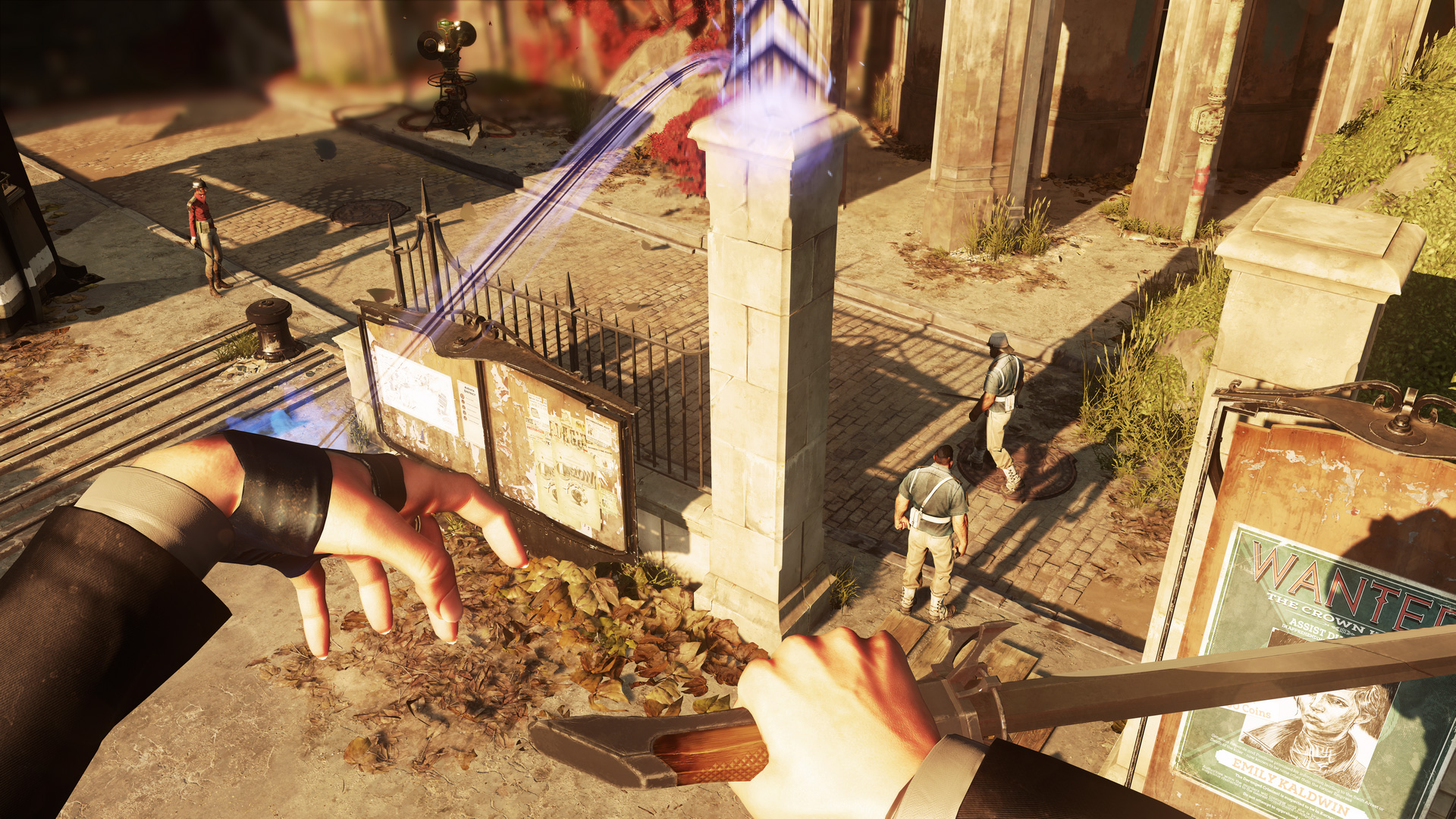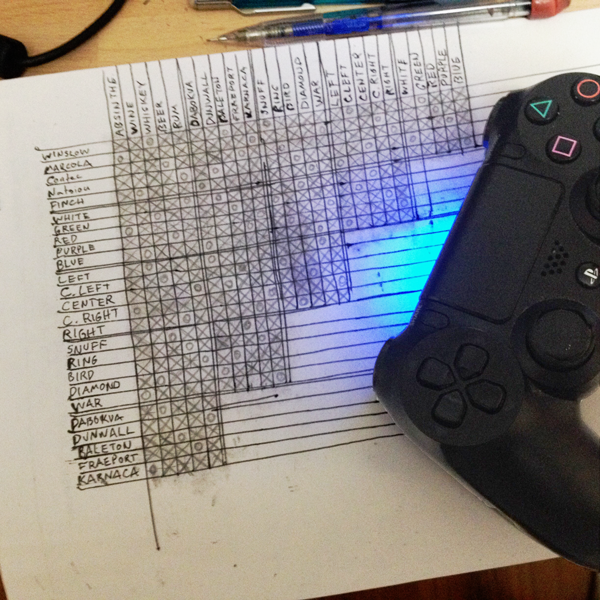Library Thursdays 001: Dishonored 2
On My First Excursion, I Find Some Surprises in Dishonored 2.
When I think of the Dishonored franchise, I generally think of a hammered dulcimer. The hammered dulcimer is a plinky instrument that sounds somewhere between a harpsichord, piano, and a mandolin, and is played with a set of xylophone or marimba-style drumsticks that the musician strikes directly against the metal strings (hammering the dulcet tones, I suppose) or like someone playing a piano by taking the cover off and hitting or plucking the strings. I only know that because I got to see one played once at the Disney California Adventure Theme park (where a guy in a park-ranger style uniform was playing American standards). I wouldn’t have known anything about hammered dulcimers at all, if they hadn’t sprung into being the trademark sound for effete whimsy that characterizes almost all Victorian or steampunk related soundtracks in the past decade. Heck, the hammered dulcimer is the featured instrument in the music that plays on Dishonored 2‘s title screen once you boot the game up.
Its own hammered dulcimer heavy soundtrack being a definite steam-punk plus, I liked the original Dishonored when I played it; particularly it’s reactive world, it’s “play your own way” style of stealth combat, Count of Monte Cristo-style non-lethal revenge options, and that instead of a morality meter it measured the success of taking back your nation in how much chaos you cause in the environments. I didn’t much care for its fairly procedural revenge story, which sadly isn’t much better the second time around in Dishonored 2, which shifts things up by letting you play as either the original game’s hero Corvo Attano, or his daughter, the deposed empress Emily Kaldwin.
For those not in the know, Dishonored is a series where, following the displacement of an Empress by a political coup, you fight to get back the crown for either your daughter (if you play as royal protector Corvo) or yourself (if you play as former Empress Emily). Along the way, you are gifted with sneaky magic abilities by a black-eyed demigod called “The Outsider”, who has at one point or another given those abilities to your rivals, as well. The most interesting bits are the world-building and in-world storytelling outside of the main plot, though the game’s best allocation of player agency allows you to murder your way through it, or choose devious non-lethal methods of revenge against your enemies.

I actually didn’t think I was going to finish it in the allotted seven days I had checked it out from the library. I mean, part of this project is me trying to pace myself realistically around other projects, as if I were regular-gamer library patron, reserving marathon play for anything current that comes down the pike. So I was a little surprised that I got enough into it that I spent the last night before I needed to return it powering through the last two missions, which conceptually were actually kind of a let down after the middle three or so; I mean, still solidly built, but missions four and five either were just amazingly nuanced, or they fit my play style and I’m a gaming egomaniac that way.
My favorite though was mission six: Dust District. Nominally, what you are told to do in this area is kill a leader of one of the two factions and bring the body to the other, to curry favor to get you into a mansion, bypassing a door locked with what is supposed to be an impossible riddle (The Jindosh Lock). You can also sneak you way through each faction area and steal the riddle’s answer. I didn’t do either of these. I stumbled up to the door, just exploring the area, and read the riddle, which turned out to be a logic puzzle like the kind my mom and I used to solve for fun when I was a kid.
So, following the format I learned from magazines full of these puzzles my mom bought when I was in elementary school, I drew a grid-matrix-thingy and set to work eliminating options based on a logical process of elimination. Good thing, too, the grid cheat sheet meant i didn’t have to keep it all in my head (which would have been instant failure) and even then I marked a few things wrong and needed to start over a couple times, turning the grid into a gray mess of graphite and eraser shavings. In that way I was able to complete the level without having to deal with either faction in the slightest.
 How I solved the Jindosh Lock. This definitely took me longer than murdering some guys, or sneaking around.
How I solved the Jindosh Lock. This definitely took me longer than murdering some guys, or sneaking around.
That was honestly the most fun I’ve had doing a puzzle in any game, partially because it was a real puzzle that required careful reading and the ability to infer important information (though I can’t speak to its relative difficulty compared to other logic puzzles). In fact, I enjoyed it so much, it was kind of a let down to go back to the regular game after I completed it. It was the same buzz I got when solving Professor Layton Puzzles, but with a far greater experience of achievement.
So my library experience of Dishonored 2 may have been the best possible one to start writing this feature, since it forced me into a much headier place than expected; and to use my brain in a way that I haven’t in decades. It’s weird to think that my final hours with the game was spent hunting for something to equal the experience of what was probably some developers’ low priority nostalgic easter egg.



